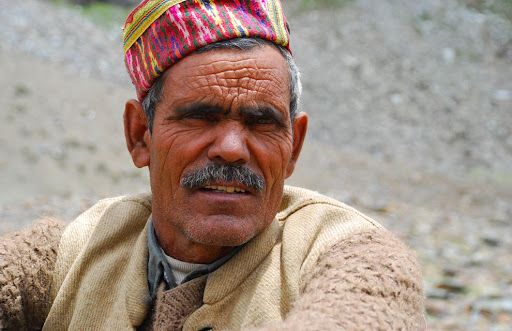Gaddi Community
Friday, May 3, 2013
Monday, April 15, 2013
Some Popular Himachali , Pahari and Gaddi Songs
Here are some himachali gaddi folk songs .
1. Ek Chidu Aisa Ho2. Uchi Chila Te Dyaara
3. Meri Reshma
4. Chambe Re Chugana
5. Rut Sangrodi
6. Mayo chamba nhin Bhulda
7. Ghade Chukiye Chal Padiye
8. Suna Ho Loko Dila Di
9. Mein Gadretti
10.Amma Bapu Kiya
11. Appe Bhale Aai
12.Bansuri Bajanda
13.Mahak Mati Ki Sunil Rana
14.Bhedaliyan Charandi Pano
15.Chail Dya Banglu
16.Dholi so mera Buddha
17.Dunge Naolo Ra (Mandyali song )
18.Ek Jind Meri Duyi Teri Ho
19.Gaddi Chokra
20.Ho Sumitra
21.Jutu Re Julare
22.Kangre Di Gori
23.Lal Lal Ho Kamlo
24.Mandyali Geet
25.Meri Neelma
26.Minjra Laguri
27.Neelma Dolma
28.Rohru Jaana
29.Mere Mandi
30.Tijo Peeche
31.Kaccha Chadiya
32.Jote Paiyura
33. Tusa Kadon Auna
34.Hun Voh Katai Jo
35.Laal Tera Saafa ho
36.Mere Dhola Ri Dhola
37.Meri Eshro
38.Occhdiye Gadretiye
39.Pangi Re Desha
40 Ram Kanne Lakshman
41.Aya Voh Lahlariya
42.Te Mohi Acchriye
43.Uchyaan Kailasha
44
Tuesday, April 9, 2013
Himachali Gaddi Community songs
List of Some Gaddi Community Songs
1. Ak Baazi layee.
2.Ak Chidu Aisa ho Album Sab bharmoriya
3. Ak Kumbadi
4. Bahi Tah Bhari Album Sabo Bharmoriya
5.Bhagsuye Di dhara
6.Bhedan Taan
6.Bholeya Voh Saamiyan
7.Chetti Chetti Aaja Mere Dhol
8.Dhud Vo Pud Bajanda
9.Ghar Tere
10.Gudak Chamak
11.He Mere Rama
12.He Mere Rama Thandi Thaari
13.Lal Chidiye
14.Le Voh Swami
15.Lutt Puttnua
16.Mer bhauye Jo
17.Mere Gaddiya
18.Mere Laal bhora Ho
19.Meriyo Pipaliyo
20.Mu bhi jaana Thande bharmour ho
21.Nilma nonstop 24 minutes
22.Nimmo Heai
23.Pangi Pakki
24.Pehla Vo Ta Perha Gaura
25.Punj Bhare O
26.Sanja Re Baji Ge Panj
27.Sunni Bhunku
28.Chambe Dea Bhatt
29.Yudh Lagdhe
1. Ak Baazi layee.
2.Ak Chidu Aisa ho Album Sab bharmoriya
3. Ak Kumbadi
4. Bahi Tah Bhari Album Sabo Bharmoriya
5.Bhagsuye Di dhara
6.Bhedan Taan
6.Bholeya Voh Saamiyan
7.Chetti Chetti Aaja Mere Dhol
8.Dhud Vo Pud Bajanda
9.Ghar Tere
10.Gudak Chamak
11.He Mere Rama
12.He Mere Rama Thandi Thaari
13.Lal Chidiye
14.Le Voh Swami
15.Lutt Puttnua
16.Mer bhauye Jo
17.Mere Gaddiya
18.Mere Laal bhora Ho
19.Meriyo Pipaliyo
20.Mu bhi jaana Thande bharmour ho
21.Nilma nonstop 24 minutes
22.Nimmo Heai
23.Pangi Pakki
24.Pehla Vo Ta Perha Gaura
25.Punj Bhare O
26.Sanja Re Baji Ge Panj
27.Sunni Bhunku
28.Chambe Dea Bhatt
29.Yudh Lagdhe
Sunday, February 12, 2012
Shivji bihane chale
Recall the old song
describing the marriage of Lord Shiva: Shivji bihane chale, palaki
sajayi ke, babhuti lagai ke… Well, something of that order is still
practiced in the hills of Himachal Pradesh. Inspired by the most
celebrated couple of Hindu mythology, the love saga of Shiv-Parvati
forms a part and parcel of the marriages in the Gaddi community, popular
as ‘Shiv Vivahs’.
Welcome
to Kangra-Bharmour, where lines between mythology and traditions get
blurred and marriage becomes an elaborate affair. Whenever there is a
marriage, the groom has to take a matrimonial test, wherein he takes the
guise of Lord Shiva by rubbing ash all over his body.
His
sisters, brothers and sister-in-laws try to convince him by
highlighting the benefits of a marriage so that he gives up his ascetic
lifestyle he plans to lead like that of Lord Shiva.“The boy says that he
am a yogi, who lives in the Himalyas and cannot get married. His family
and relatives beat him with plants even as he makes circles in the
backyard. The third round is the most crucial. If the spirit of lord
Shiva persists, the boys runs to a Shiv temple, choosing to become a
jogi and it is believed that Shiv’s will has taken over him,” says
Joginder Charak, a resident of Nagri in Palampur.
This
year itself, there were reports of two such cases _ in Jia and Khamiwal
_ where the would-be-grooms fled from the ceremony, rejecting the
institution of marriage. If the comes out of Shivji’s ‘awe’ he gets
ready to take a barat to the girl’s house and the marriage is officially
on. If due to any eventuality, the groom is unable to accompany the
barat, a katara (sharp-edged weapon) is sent as his representative and
the bride takes pheras with it and stays with it till she is handed over
to the groom, says Kul Prakash, a resident of Chamba district.
“For
the gaddi community, Shiv-Parvati are the ideal couple personified and
that is why the entire marriage ceremony is performed the way Lord Shiva
is known to have gone about his marriage in the Vedas,’ he adds. In the
olden times the marriage used to go on for days and the baraat is
served with meat and hooch. There was also a practice to marry off two
sisters on the same day. But with life becoming much faster, many
practices have been done away with. “Earlier, the boy and girls were
married in their teens and the marriage ceremony was virtually performed
all over again when they were brought together on attaining adulthood.
But this has stopped now,’ adds M.R.Dalel, a resident of Bharmour.
When
the barat finally comes back, a ‘nuwala’, Lord Shiva’s worship is
organised by the groom’s family and relatives and friends converge to
have another round of festivities. A large section of the gaddi
community continue to be deep rooted in their age-old traditions and
this form of elaborate ‘Shiv Vivah’ or ‘Gaddi Vivah’ is still prevalent
in district Kangra and Chamba, especially bharmour, Banikhet, Tisa and
Dalhousie.
Monday, January 23, 2012
Subscribe to:
Comments (Atom)


